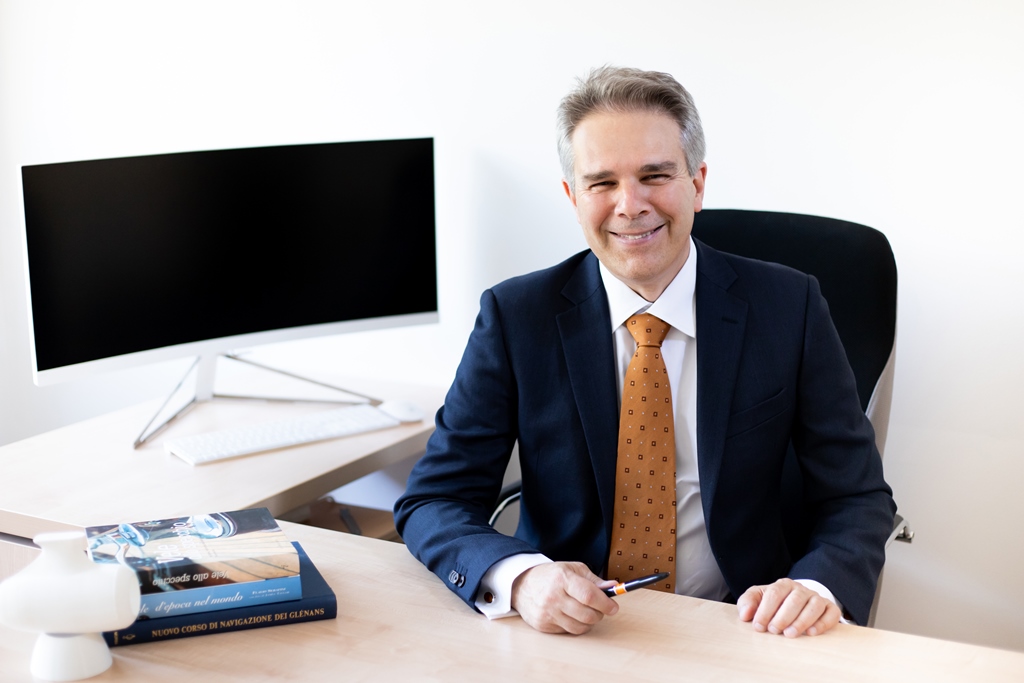Interview to Sealence CEO William Gobbo

May 26, 2021
We got in touch with William Gobbo, CEO in Sealence, a start-up who redefines the way to live the sea! Sealence is an innovative tech start-up founded in 2017 after a 10-years incubation process in William Gobbo’s mind. In 2007 William was director in the marine sector. One day, his boat engine broke down: he thought “damn it, to repair or to exchange it could be too much expensive and pollutant”, so, why not?, let’s turn a problem into an opportunity! The opportunity was an electric engine – yes, You heard me, the dream to save the sea was on an ecological and full-powered electric engines opportunity that in 2007 didn’t still have the industrial-factor such as the automotive industry had.
In 2017 William Gobbo designed his own electric boat engine and shared the project with the italian University of Padova. One teacher of them, Ernesto Benini, believed in the project and started to build up the first lab-jets in order to get into the business with William Gobbo. At the 2019 Genova International Boat Show the partners introduced their project and raised a 450.000,00 EUR in a 3-weeks crowdfunding campaign. The project grew and they engaged a new Chief Technical Officer, Marco Cassinelli (ex Lamborghini, Alfa Romeo and MVAugusta). A new crowdfunding campaign in 2020 raised 3.000.000,00 EUR in 20 days (it was a continental record!). This let the company to design DeepSpeed, latest Sealence jewel that will be patented in 47 countries around the world. Let’s talk about it!

Hello William, Thank You for your time! Tell us about the background about the Sealence foundation, how a personal issue turns into an everyone’s issue?
Innovation is both a market-driven and a product-driven process. The product-driven cares about the market demand; the first one cares about the market need. The question is: are we driving the right product for the right needs? For example, Facebook is a product-driven innovation, because, when Facebook was founded, there were no market needs. The product Facebook brang to light the dormant need. On the contrary, DeepSpeed was designed to meet my need with everyone’s need and with the need to respect the environment in the sea.
What about the electric motors in the nautical sectors?
It would be good to find appropriate solutions in yachting. Electric engines were first projected for little yachts and they didn’t need lots of power. The sector didn’t grow at all. In the automotive sector, electric engines grew thanks to big players like Tesla. I mean, in the nautical sectors we should need a Tesla, a big one who boosts a new waterjet-alternative technology. I hope that Sealence will run this process!
What about the environmental impact assessment in the nautical sector?
It’s an obligatory process, we have to save environmental resources in order to go the extra mile for innovations and planet benefits. Fortunately, a change of mindset process is running in innovation for business – I mean, certifications to be environmentally friendly companies and investment funds. My Sealence company really wants to do it in the best way, we want a new mindset, we can do it, in our small way we can save the planet. In this respect, the nautical sector is a typical dichotomous system: one way, it is environmentally friendly, but in the other way it doesn’t keep up at all with technology innovations. Just think that real technology innovation entries into force of the latest environment amendments.
Tell us about DeepSpeed.
DeepSpeed is a third new generation of worldwide patented naval propulsion who overlooks the classic waterjet technology. DeepSpeed matches waterjet and electric engine with a water terminal set-up. The off-board motor positioning has allowed us to implement the fluid-dynamics technology and increase more efficiency compared to traditional-systems engine. Increasing efficiency means consuming much less energy and generate the same boost – this is our true innovation. Don’t forget that DeepSpeed is also an energy efficiency project for nautical sector, our electric engine is a perfect tool for the energy transition and the decarbonisation of maritime transport.

How does Sealence gain a return on investments?
DeepSpeed’s highly efficient propulsive engines save us money, since they consume less energy to generate the same boost. In regards to the commercial side of the nautical sector, even the tiniest improvement in efficiency can save tons of fuel: our engine could have a positive impact from an economical and environmental standpoint.
How effective were crowdfunding campaigns for your project? Would you recommend them to other aspiring startuppers? And what are the possible obstacles?
Well, crowdfunding is only apparently the “easy way”. 30K or 50K euro campaigns are mostly attainable for everyone, but it gets complicated once the amount goes up to 400-500K. Then, billion-worthy campaigns are an unattainable goal for most startup companies worldwide. We’ve been lucky right from the start, because we always got offers that exceeded our needs. We raised 520K€ for our first campaign, although we asked for 450K€, so we returned the remaining 70K. The second time we raised 2.9M€ in 17 days, while we initially intended to reach 1M in 60 days. Sealence is a special case and doesn’t represent the standard, especially because it exists in the Italian capital market.
As for question n. 2, while everyone sees crowdfunding as a means for collecting money, I see it as a way of investigating the startup’s economic situation for raising finance. That’s what we do through campaigns, testing the waters. But Sealence is the exception and not the norm: we only manage to do this thanks to our amazing and professional team.
Speaking of young startuppers, they should consider the risks of crowdfunding. An unsuccessful campaign will deter investors from putting money into your project. Therefore, the prospect of future success becomes shaky. And since faith is a startup’s priority, in this case failure is unfortunately the outcome. Before getting into crowdfunding, I suggest doing accurate research and avoiding a “DIY” approach.

By 2030, will Europe’s climate and energy goals positively impact Sealence?
Electric propulsion in the commercial nautical sector is already well-implemented and going strong. With the EU’s help, we will probably manage to build the first 24m, 160 passenger ferry-boat powered by DeepSpeed by 2021.
How important is the generational dissonance – seniors working alongside young individuals – in your team?
Young people’s enthusiasm mixed with seasoned people’s experience is a fundamental asset to us. “Experience” means having a background and the skill to solve problems in a structured way, while the young’s fresh minds offer plenty of innovative and extrinsic solutions. Our professionally diverse team, consisting of biomedical engineers, Art History graduate students, mechanics and rocket scientists, defines what Sealence is and what it does.
Can you please address the rumors about your company employing 30 people over the next few months?
We’ve been active for only 4 years. However, we’re worth billions, we have a 26-people team and we got 47 patents globally. For a small Italian startup these numbers are incredible, but changing the entire world is still an uphill struggle. We’re aware of our current inadequacy, and that’s why we’re building a stronger Sealence: the recruitment plan expected for 2021 represents an important step for the Sealence of the future.
Credits






